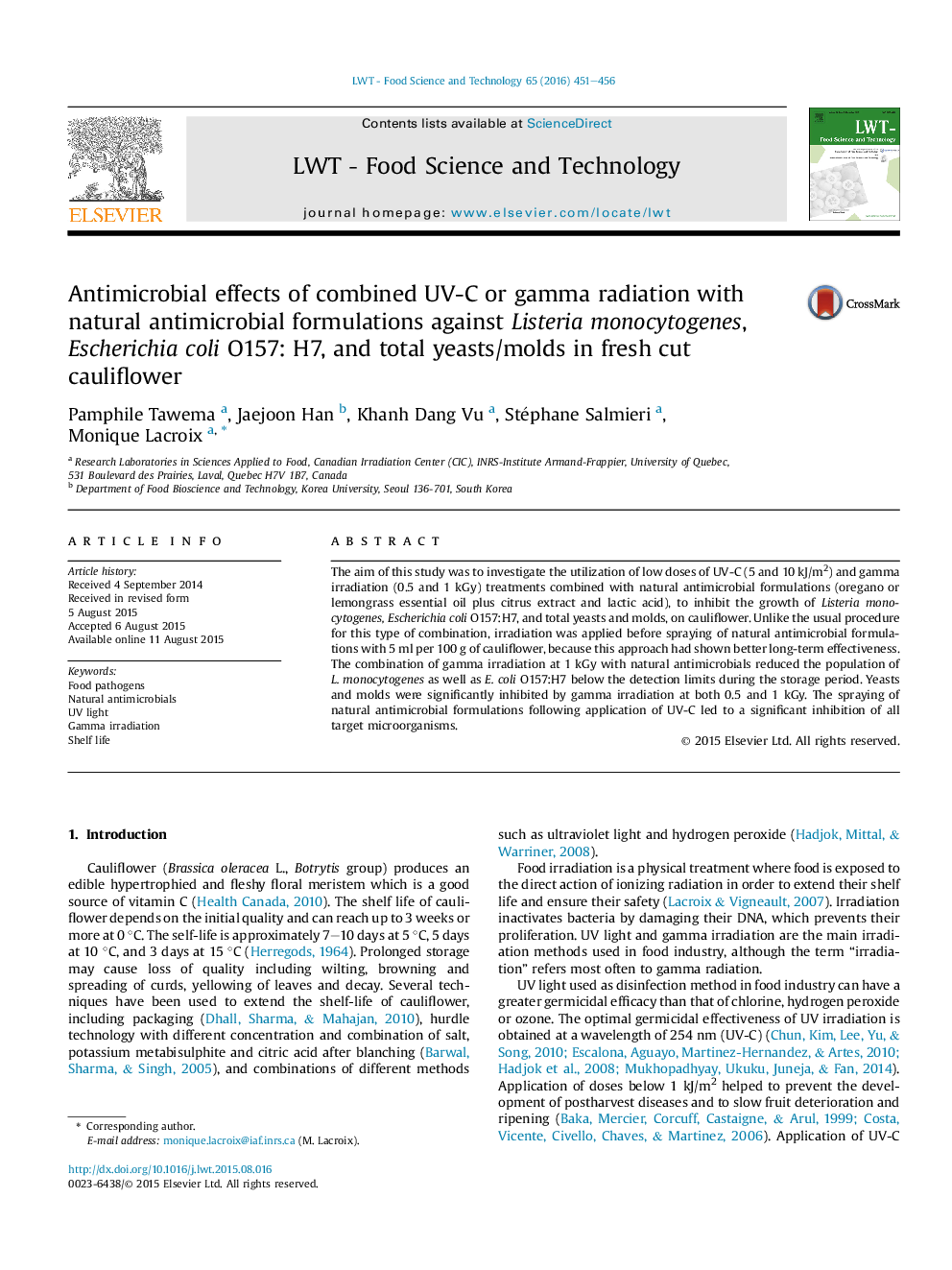| Article ID | Journal | Published Year | Pages | File Type |
|---|---|---|---|---|
| 6401588 | LWT - Food Science and Technology | 2016 | 6 Pages |
â¢Fresh cut cauliflower samples were used as a vegetable model.â¢Listeria monocytogenes, Escherichia coli O157:H7, and total yeasts/molds are targets.â¢Cauliflowers were treated by irradiation and antimicrobial formulations.â¢Î³-radiation plus formulations reduced Listeria and E. coli to undetectable limits.â¢UV-C radiation plus formulations significantly inhibited all target microorganisms.
The aim of this study was to investigate the utilization of low doses of UV-C (5 and 10 kJ/m2) and gamma irradiation (0.5 and 1 kGy) treatments combined with natural antimicrobial formulations (oregano or lemongrass essential oil plus citrus extract and lactic acid), to inhibit the growth of Listeria monocytogenes, Escherichia coli O157:H7, and total yeasts and molds, on cauliflower. Unlike the usual procedure for this type of combination, irradiation was applied before spraying of natural antimicrobial formulations with 5 ml per 100 g of cauliflower, because this approach had shown better long-term effectiveness. The combination of gamma irradiation at 1 kGy with natural antimicrobials reduced the population of L. monocytogenes as well as E. coli O157:H7 below the detection limits during the storage period. Yeasts and molds were significantly inhibited by gamma irradiation at both 0.5 and 1 kGy. The spraying of natural antimicrobial formulations following application of UV-C led to a significant inhibition of all target microorganisms.
